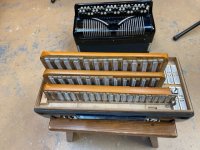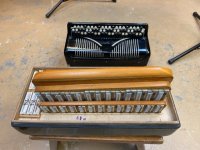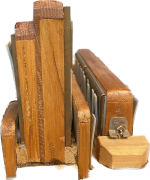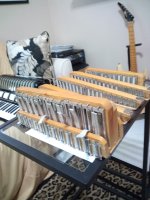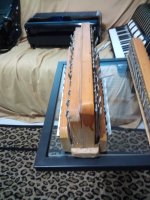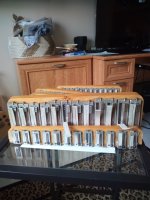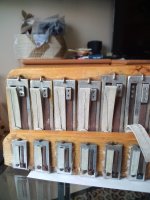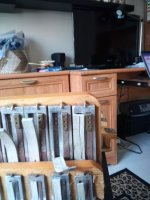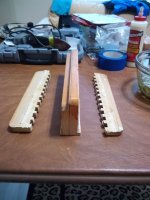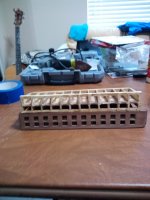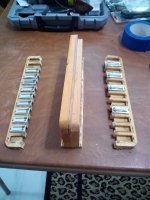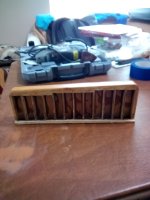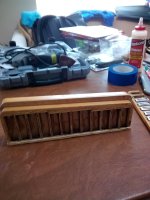accordmosh1
Newbie
I have played the piano accordion all my life.
Luckily, I learned ( from Aldo Mencaccini - Bell Accordion- NY)-how to take them apart , fix them and put them back together.
I have always loved the deep bass sound of the Russian bayan.
I currently have a Dallape Suprmaestro and I would like to remove the current Bass Reed Block ( 12 bass notes- one side -and 12 Tenor notes- other side) and substitute a complete Russian bayan bass block ( they call tem -"resonator).
I realize the problem with the height ( bayan bass block is taller). I can order taller bellows ( with more bellow folds- from Libery Bellows- Philadelphia, PA, USA).
The bigger problem is with geometry of the air holes at the bottom of the reed block. The Dallape bottom and the bayan bottom are probably- completely different.
Has anybody ever tried this?
Any ideas ?
Also- does anybody have a "4 reed bayan bass block" for sale ( picture attached). ?
All ideas, hint , suggestions are very welcom!
Thanks
Luckily, I learned ( from Aldo Mencaccini - Bell Accordion- NY)-how to take them apart , fix them and put them back together.
I have always loved the deep bass sound of the Russian bayan.
I currently have a Dallape Suprmaestro and I would like to remove the current Bass Reed Block ( 12 bass notes- one side -and 12 Tenor notes- other side) and substitute a complete Russian bayan bass block ( they call tem -"resonator).
I realize the problem with the height ( bayan bass block is taller). I can order taller bellows ( with more bellow folds- from Libery Bellows- Philadelphia, PA, USA).
The bigger problem is with geometry of the air holes at the bottom of the reed block. The Dallape bottom and the bayan bottom are probably- completely different.
Has anybody ever tried this?
Any ideas ?
Also- does anybody have a "4 reed bayan bass block" for sale ( picture attached). ?
All ideas, hint , suggestions are very welcom!
Thanks

